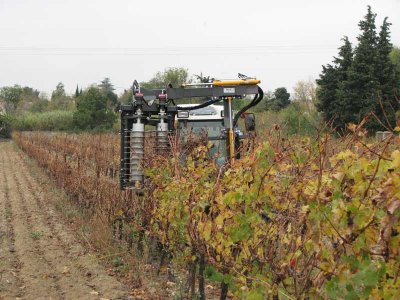Pre-pruning machine
Used for a long time in cordon-pruned vineyards, pre-pruning machines free the shoots from the trellising wires and cut them into fragments that fall at the foot of the stumps, making it easier to draw out the wood and increasing productivity. This technique is particularly advantageous, with productivity varying according to the pruning system, from 10 to 15% for long pruning (guyot) to 60% for short pruning (cordon). Pre-pruners are made up of various components, including the frame, opening system, cutting elements and drive systems, each designed to optimise pruning efficiency according to the specific needs of the vineyard.
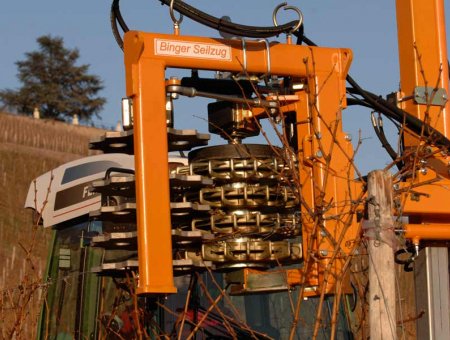
Work objective
Used for a long time in cordon vineyards, pre-pruners free the shoots from the trellising wires and cut them into fragments that fall to the foot of the stumps. The aim of this technique is to make it easier to pull the wood, thereby increasing productivity. This varies according to the pruning system used, from 10 to 15% for long pruning (guyot) to up to 60% for short pruning (cordon).
With cordon pruning, the passage of the pre-pruner can be quite low, as the number of cutting elements fitted to the machine is high (up to 14 pairs of discs for a cutting height of around 1,200 mm).
With Guyot pruning, the aim is simply to free the shoots from the upper wire so as to keep the length for the future cane. The pre-pruning element will only have 3 to 4 pairs of discs (cutting height around 250 mm).
Components of the pruning machine
The frame
There are two frame sizes:- a short one for top wire stripping work, which can contain from 3 to 10 pairs of cutting elements
- a long one for work on short pruning requiring a greater cutting height of 7 to 14 pairs
The opening system
This opens the machine so that the cutting elements can be removed when passing through the post. This operation can be manual or automated. Automatic opening at the stake is ensured by optical detection (Pellenc Visio system) or inductive detection (requires the presence of metal stakes).
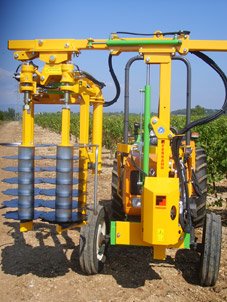
Pruning machine
The cutting elements
These are located on either side of the row axis. Each element consists of a shaft and cutting parts, which may be :- fixed knives and a rotating cage commonly known as a "daisy". This system, developed by Pellenc, consists of a circular feeder whose periphery forms fingers inside which is a crumbling blade. The cage rotates at around 80 rpm.
- rotary saws and cages. Used by manufacturers such as Tordable and Binger, this system is similar to the one described above. Cutting is carried out by circular saws rotating at between 1,000 and 2,000 rpm.
- simple discs. Due to their light weight, many manufacturers offer this type of cutting element. They can be made of high-strength steel (Ferrand, Grégoire, etc.) or an alloy equipped with a toothed cutting ring (Provitis). Hydraulic requirements are generally low, so a hydraulic power pack is not necessary.
- long intervals (between 90 and 100 mm).
- short intervals (between 50 and 60 mm) for cleaning the upper trellis wire.
Cutting element drive
Hydraulic motors drive the cutting elements. The number of motors varies, depending on the technology of the cutting elements (saw and rotating cage or single disc). Oil flow rates vary, from 25 to 40 l/min depending on motor displacement.Gimlet elimination systems
Some machines also offer gimlet removal systems to clean the support wires.
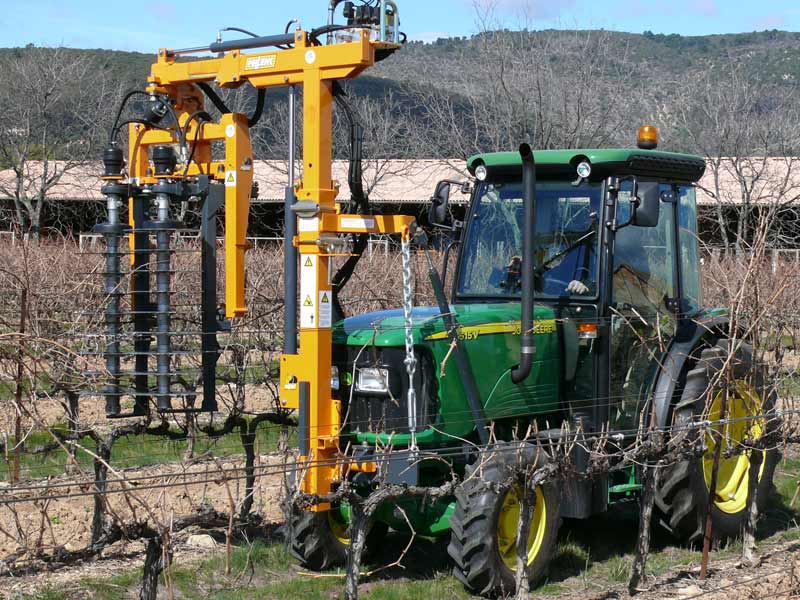
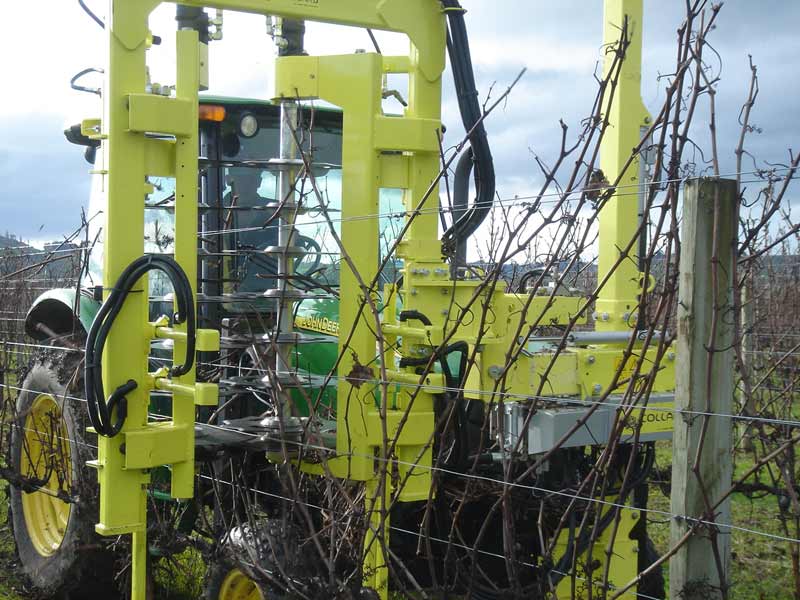
Adjusting and using the pre-cutter
Cutting height
This must be adapted to suit the type of pruning.Offset (mounted on an inter-row tractor)
So that the machine is always in line with the row.Cutter rotation speed
This must be adapted to the forward speed of the tractor so that the machine can properly grab the shoots and clean the upper trellising wire.